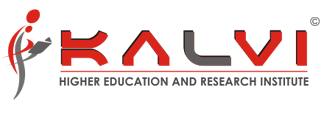Course Syllabus
Course Name: Visual basic����������������������� ��������� Duration:
�Week End Batch: (5 months)
���������������������������� ������������������������������������ Week Day Batch :( 21/2 months)
Chapter 1: Introduction to Application Development Using Visual Basic
- Features of Visual Basic
- Editions of Visual Basic
- Visual Basic terminology
- Working in the development environment
- Event-driven programming
- Creating a program in Visual Basic
- Project and executable files
- Visual Basic reference materials
- Self-check questions
Chapter 2: Visual Basic Fundamentals
- Introduction to objects
- Controlling objects
- Properties, methods, and events
- Working with forms
- Introduction to controls
- Basic controls
- Self-check questions
Chapter 3: Working with Code and Forms
- Understanding modules
- Using the code editor window
- Other code navigation features
- Code documentation and formatting
- Setting environment options
- Setting code formatting options
- Automatic code completion features
- Interacting with the user
- Using the MsgBox function
- Using the InputBox function
- Working with code statements
- Managing forms
- Self-check questions
Chapter 4: Variables and Procedures
- Overview of variables
- Declaring variables
- Variable scope
- Using arrays
- User-defined data types
- Converting data types
- Using constants
- Working with procedures
- Working with dates and times
- Using the Format function
- Manipulating text strings
- Self-check questions
Chapter 5: Controlling Program Execution
- Comparison and logical operators
- Using If…Then statements
- Using Select Case statements
- Overview of looping structures
- Using Do…Loop structures
- For…Next statement
- Exiting a loop
- Self-check questions
Chapter 6: Debugging
- Types of errors
- Break mode
- Using the Debug toolbar
- Using the Watch window
- Using the Immediate window
- Using the Locals window
- Tracing program flow with the Call Stack
- Self-check questions
Chapter 7: Working with Controls
- Types of controls
- Overview of standard controls
- Using ComboBox and ListBox controls
- Using OptionButton and Frame controls
- Working with selected text
- Advanced standard controls
- ActiveX controls
- Insertable objects
- Self-check questions
Chapter 8: Data Access Using the ADO Data Control
- Overview of ActiveX data objects
- Visual Basic data access features
- Relational database concepts
- Using the ADO Data control to access data
- Structured query language (SQL)
- Manipulating data
- Using Data Form Wizard
- Self-check questions
Chapter 9: Input Validation
- Field-level validation
- Using text box properties to restrict data entry
- Using the Masked Edit control
- Form-level validation
- Form events used when validating data
- Self-check questions
Chapter 10: Error Trapping
- Overview of run-time errors
- Overview of the error handling process
- The Err object
- Errors and the calling chain
- Errors in an error-handling routine
- Inline error handling
- Error-handling styles
- General error-trapping options in Visual Basic
- Self-check questions
Chapter 11: Enhancing the User Interface
- Menus
- Status bars
- Toolbars
Chapter 12: Drag and Drop
- Overview of drag and drop
- Mouse events
- Drag-and-drop basics
- Self-check questions
Chapter 13: More about Controls
- Collections
- Using control arrays
- Self-check questions
Chapter 14: Finishing Touches
- User interface design principles
- Distributing an application
- Creating a default project
- Review: Steps to creating a Visual Basic program
- Development resources
- Self-check questions
�

